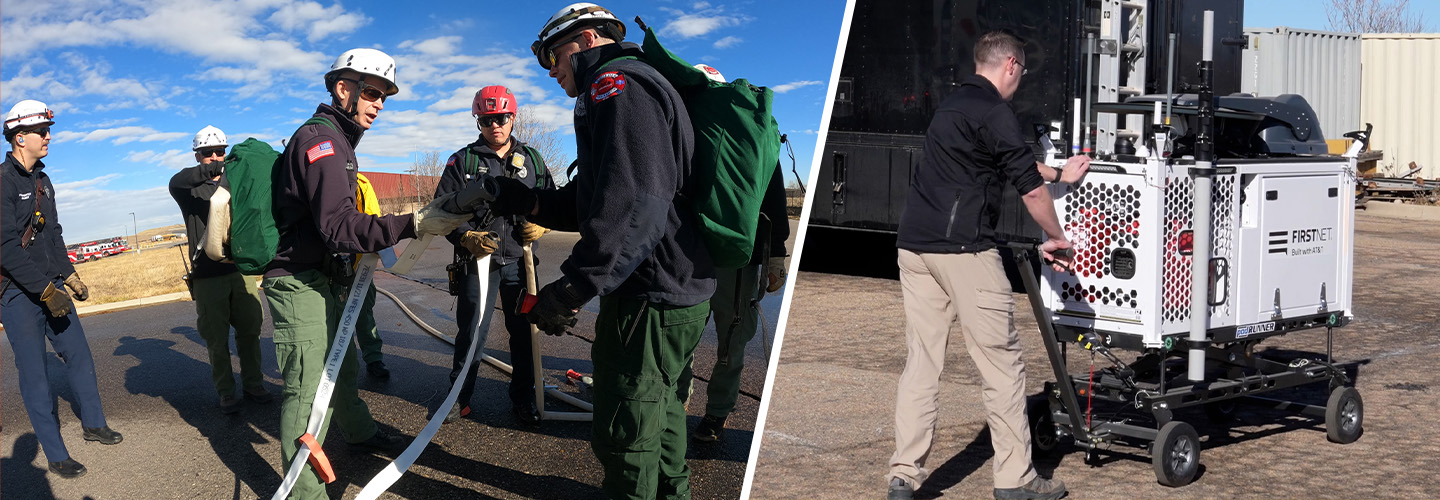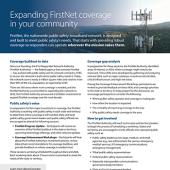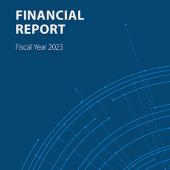On March 26, 2022, firefighters in Boulder, Colorado, began their day on alert. They received an email at 7:40 a.m. that read: “One of those days…for fire.”
Sent by Boulder Wildland Fire Specialist Erin Doyle, the email flagged the potential of wildfires. The forecast for the day was unseasonably warm for Colorado spring, with no moisture and wind gusts around 30+ miles per hour. The weather, coupled with the fact that grasses in the area hadn’t started to grow back yet, meant the risk for fire was high.
Doyle’s warning was aptly timed. Six hours later, a fire broke out near Boulder’s Table Mesa neighborhood. Due to its proximity to the National Center for Atmospheric Research (NCAR) Facility, it was named the NCAR Fire. Ultimately, it burned 190 acres over six days and prompted the evacuation of 19,000 people.
Agency-owned FirstNet assets support immediate connectivity
Roughly two hours after response to the NCAR Fire began, Philip Kirmuss, Radio Systems Manager for the City of Boulder, and his team received a call from responders at the incident command post. Because the fire was in a remote location in the foothills of the Rocky Mountains, communication was limited. Kirmuss explained, “Our police staff at the incident command post overlooking the NCAR Fire were unable to communicate efficiently over text and by phone, and needed help.”
The team transported its FirstNet Compact Rapid Deployable (CRD) to the incident command post set up at the NCAR facility. The CRD is a small, portable cell site, designed to be owned, managed, and deployed by public safety agencies. It can be set up by a single person quickly and establish more than a one-mile radius of coverage.
“When we deployed [the CRD], we were able to, within 15 minutes, get coverage and connectivity for those police officers that did not have the ability of talking on their cell phones,” said Kirmuss.
Responders on the ground noticed a difference immediately. “It instantly assisted us in being able to not only communicate via cell phone, we were able to get our laptops up and running and really help with things like the evacuation zone and sending out public messaging,” noted Boulder Police Deputy Chief Stephen Redfearn. “In an area up there where normally we don't have great coverage, it was extremely helpful for us to do all those things that affect public safety.”
FirstNet supports mutual aid during wildfire response
Once communications were established via the CRD, the team requested a FirstNet SatCOLT (satellite cell on light truck) to provide additional communications at the incident command post. In addition to the SatCOLT, the team was provided a kit with 14 FirstNet phones and 2 hotspots, which helped connect firefighters conducting logistics at the command post.
This was critical for supporting operations and coordinating response among agencies. “Being able to bring the devices up really helped bridge the gaps that we had. Most tactical communications are done on the radio, but all of the behind-the-scenes logistics, coordinating outside resources and departments to the scene are usually done on a cell phone or on a computer,” explained Brian Oliver, Wildland Division Chief for Boulder Fire-Rescue. “So, having that very robust connectivity really kept us moving efficiently and effectively.”
During the NCAR Fire, FirstNet enabled police and fire responders from Boulder to easily communicate. Boulder Fire-Rescue Chief Michael Calderazzo noted this as a benefit of FirstNet during other operations, as well. “FirstNet is just one of the many tools that we use now to help us with our police department partners,” he said. “Being able to be on the same system with them and be able to contact them directly outside of the radio system is just as much a benefit of being together on FirstNet as it was being able to sit face-to-face in a command post.”




















